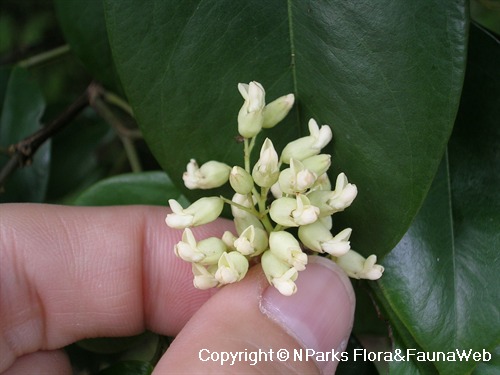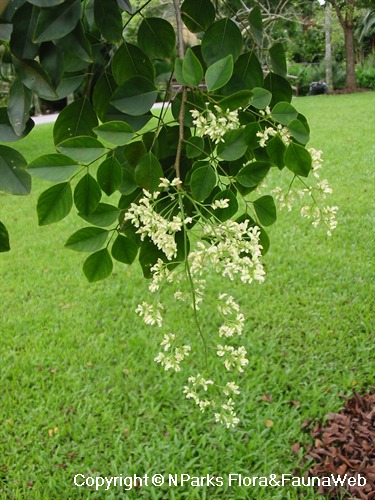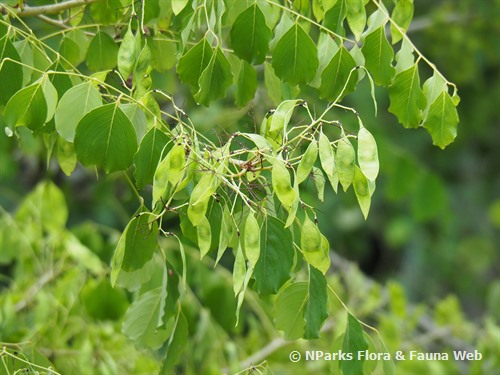
Back
Dalbergia latifolia Roxb.
| Family Name: | Fabaceae (Leguminosae) |
| Common Name: | Indian Rosewood, Tamalan Tree, East Indian Rosewood, Black Rosewood, Sonokeling, Bombay Blackwood, 阔叶黄檀 |
Name
Classifications and Characteristics
| Plant Division | Angiosperms (Flowering Seed Plants) |
|---|---|
| Plant Growth Form | Tree (Medium (16m-30m)) |
| Lifespan (in Singapore) | Perennial |
| Mode of Nutrition | Autotrophic |
| Plant Shape | Rounded |
Biogeography
| Native Distribution | India, Nepal and Indonesia |
|---|---|
| Native Habitat | Terrestrial (Monsoon Forest) |
| Preferred Climate Zone | Tropical, Sub-Tropical / Monsoonal |
| Local Conservation Status | Non-native |
Description and Ethnobotany
| Growth Form | Single stemmed tree with a wide spreading dome-shaped crown, able to grow up to about 15 - 40 m and with a girth of about 2 m. |
|---|---|
| Trunk | Grey, thin bark with irregular short cracks and exfoliating in fibrous longitudinal flakes. |
| Foliage | Alternate, compound dark green leaves measuring about 10 - 30 cm long, odd-pinnate with 5 - 7 unequal sized leaflets. |
| Flowers | White small flowers in long inflorescences measuring about 5 - 20 cm long. |
| Fruit | Indehiscent brown pod measuring about 15 cm long and 1.5 - 2.5 cm wide, pointed at both ends. |
| Others - Plant Morphology | This species is protected under the Indian Forest Act, whereby there is a ban on the export of logs or sawn timber. It is also listed as "Vulnerable" in the IUCN Red List of Threatened Species. |
| Habitat | Mainly found in monsoon forests and up to areas with an altitude of 1500 m. |
| Etymology | Genus Dalbergia is named in honour of Swedish brothers Nicholas Dalberg and Carl Gustav. The former is a physician and botanist while the latter explored the West Indies. Species latifolia is from the Latin word "latiflorus" which means with broad leaves. |
| Ethnobotanical Uses | Medicinal: Tannins extracted from the bark are used to treat diarrhoea and indigestion Timber & Products: Timber used to make furniture, veneers, musical instruments, boat keels and joinery. Agriculture - Forestry: Due to its nitrogen-fixing properties, the foliage is usually nitrogen-rich and is used as mulch or fodder. This species is usually planted with crops like rice, maize, beans, coffee and ginger. |
Landscaping Features
| Landscape Uses | Suitable for Roadsides, General, Parks & Gardens, Riverine, Shade Providing Tree / Palm |
|---|
Fauna, Pollination and Dispersal
| Seed or Spore Dispersal | Abiotic |
|---|
Plant Care and Propagation
| Light Preference | Full Sun |
|---|---|
| Water Preference | Moderate Water |
| Plant Growth Rate | Moderate |
| Rootzone Tolerance | Moist Soils, Well-Drained Soils |
| Propagation Method | Seed |
Foliar
| Foliage Retention | Deciduous |
|---|---|
| Mature Foliage Colour(s) | Green |
| Foliar Type | Compound |
| Foliar Arrangement Along Stem | Alternate |
| Leaf Area Index (LAI) for Green Plot Ratio | 4.0 (Tree - Dense Canopy) |
Floral (Angiosperm)
| Flower Colour(s) | White |
|---|---|
| Flower Grouping | Cluster / Inflorescence |
Fruit, Seed and Spore
| Mature Fruit Colour(s) | Brown |
|---|---|
| Fruit Classification | Simple Fruit |
| Fruit Type | Indehiscent Dry Fruit , Pod |
| Mature Seed Colour(s) | Black, Brown |
| Mature Seed Texture(s) | Smooth, Glossy / Shiny |
| Seed Description | Seeds are 6 - 7 mm long and 4 - 5 mm wide. |
| Seed Quantity Per Fruit | Few (1-5) |
Image Repository
Others
| Master ID | 1543 |
|---|---|
| Species ID | 2836 |
| Flora Disclaimer | The information in this website has been compiled from reliable sources, such as reference works on medicinal plants. It is not a substitute for medical advice or treatment and NParks does not purport to provide any medical advice. Readers should always consult his/her physician before using or consuming a plant for medicinal purposes. |

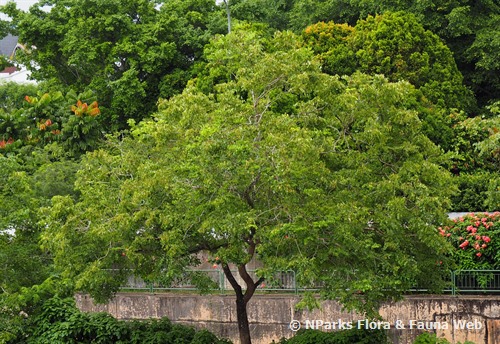
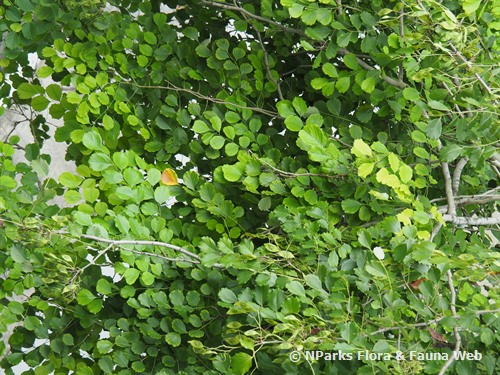
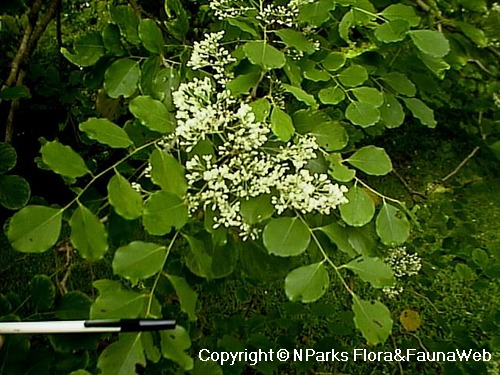
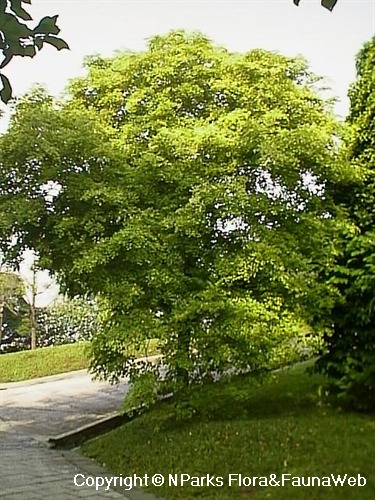

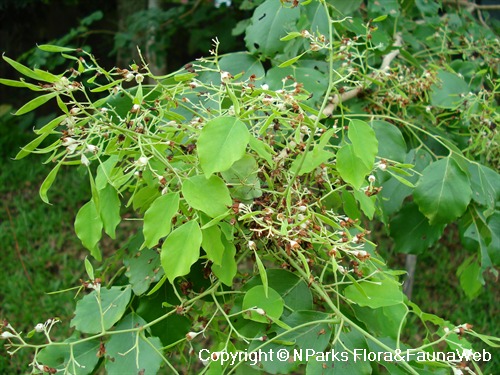
.jpg)
.jpg)
